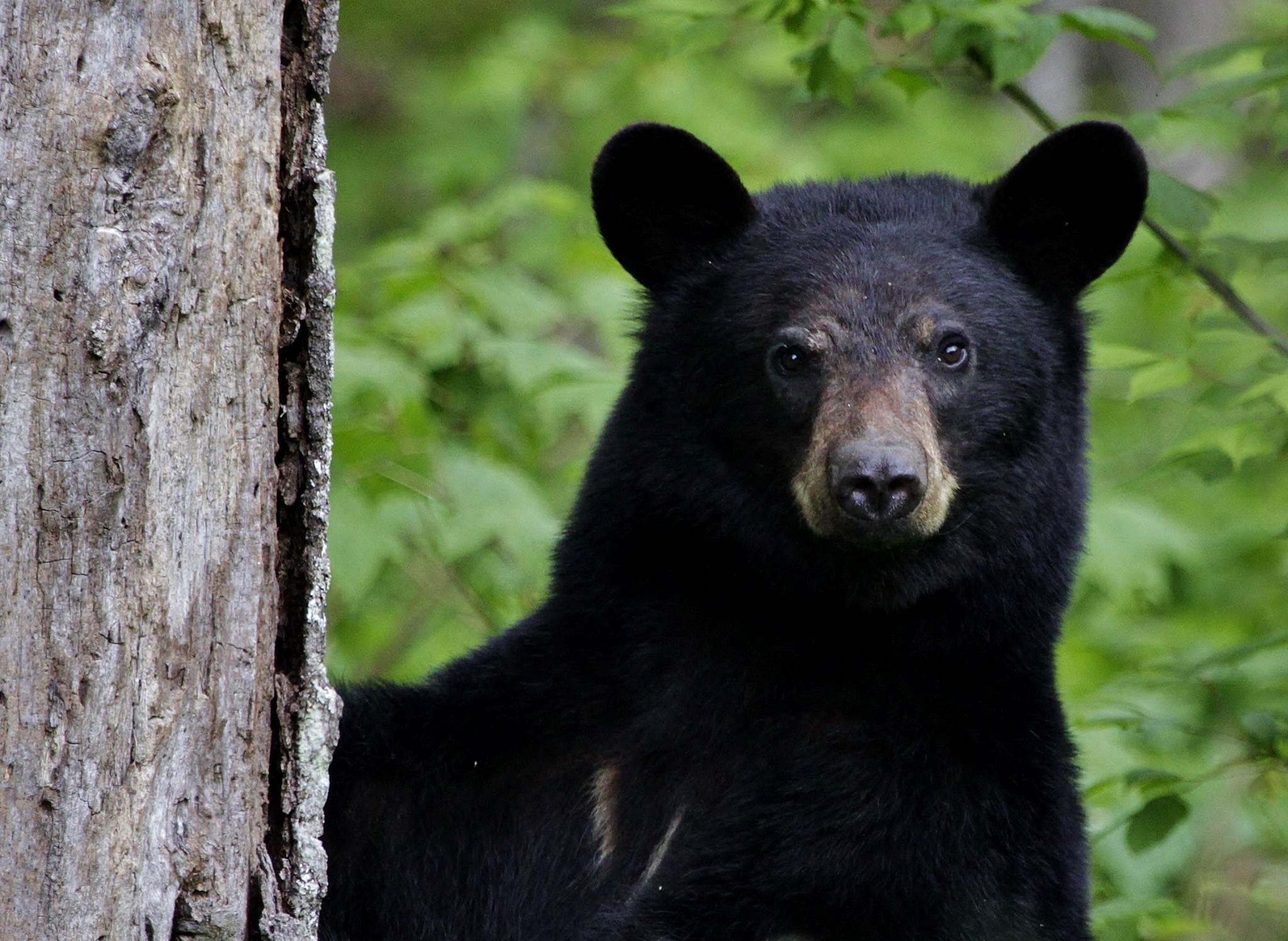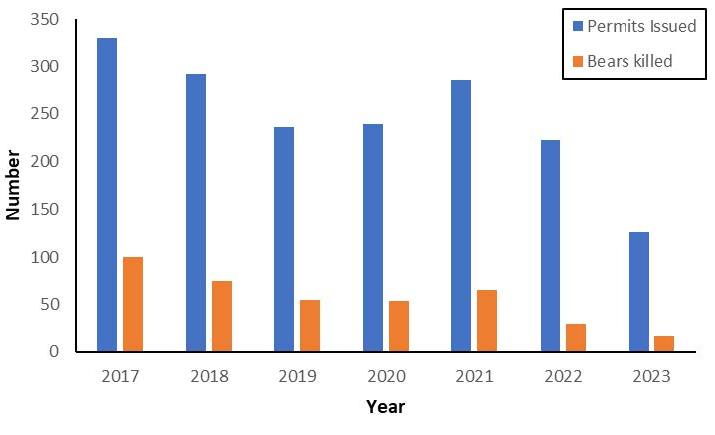CDFW Releases Updated Black Bear Conservation and Management Plan
April 14, 2025

Black bears are one of California’s most common large predators, with a population of around 60,000.
CALIFORNIA — The California Department of Fish and Wildlife (CDFW) has published an updated Black Bear Conservation and Management Plan, replacing the 1998 version with a modern framework to manage the state’s estimated 60,000 black bears. The comprehensive document outlines strategies to conserve bear populations that are ecologically functional, disease-resilient, and genetically diverse while addressing human-wildlife interactions and habitat preservation. The plan intends to “conserve and manage black bear populations… and conserve and enhance their habitats” while minimizing conflicts and supporting public education. Developed with input from scientists, hunters, Native American tribes, and the public—garnering over 5,000 comments—the plan hopes to reflect a collaborative and science-driven approach.
Advanced Population Monitoring Techniques
A significant advancement in the 2025 plan is the adoption of an Integrated Population Model (IPM), replacing the less precise indirect modeling of the previous version. The IPM incorporates data from genetic sampling, camera traps, and harvest records to provide detailed population estimates across nine Bear Conservation Regions. Additional methods, such as GPS tracking and social media analysis, enhance understanding of bear movements and genetic diversity, enabling targeted management decisions.
Mitigating Human-Bear Conflicts

Human-black bear conflicts have increased from 2017 to 2023.

Depredation permits and bears killed, however, have decreased.
The plan addresses a notable rise in human-black bear conflicts, with incidents increasing from approximately 500 in 2017 to over 1,000 in 2022. Despite this, the issuance of depredation permits and lethal removals has declined, underscoring a shift toward non-lethal solutions. Strategies include promoting bear-resistant infrastructure, aversive conditioning, and real-time incident tracking via the Wildlife Incident Reporting system.
Regulated Hunting and Its Challenges
Hunting remains part of the management strategy, with annual harvest rates below 3% of the statewide population. The plan recognizes hunting’s ecological benefits, such as supporting seed dispersal, but notes that its effectiveness in reducing conflicts in California is “unclear.” While studies suggest higher harvest rates could control population growth, “substantial public opposition” limits that approach, highlighting the challenge of aligning ecological goals with public sentiment.
Focus on Welfare and Disease Control
Animal welfare and disease management are newly emphasized priorities. The plan establishes protocols for rehabilitating injured bears and monitoring diseases like sarcoptic mange, which affect both individual bears and broader populations. “Disease, and health in general, is important for black bear conservation and management,” the document asserts. These efforts hope to ensure the long-term resilience of bear populations.
Habitat Protection and Connectivity

An updated black bear range map was developed in 2024 using local CDFW biologists’ feedback, verified records from iNaturalist and the Global Biodiversity Information Facility, and US Forest Service Data.
Habitat conservation underpins the plan, with updated range maps reflecting bear expansion into regions like the Central Coast. The focus on connectivity aims to maintain genetic diversity, particularly for isolated populations. By protecting and linking habitats, CDFW seeks to bolster bears’ adaptability to environmental pressures such as climate change and habitat fragmentation.
Education and Stakeholder Engagement
CDFW views public education as a cornerstone of its plan, offering programs to foster an appreciation of bears’ ecological roles and promote coexistence. Collaboration with agencies, tribes, and other partners is seen as equally vital, with the plan noting that “collaborating agencies… have been critical to making this work possible.” CDFW says traditional knowledge gleaned through tribal co-management positively informs conservation practices.
In Summary
The 2025 Black Bear Conservation and Management Plan lays out California’s updated approach to managing black bears. It employs advanced monitoring tools, non-lethal ways to reduce human-bear clashes, and steps to protect habitats. The plan also involves working with groups like Native American tribes and federal agencies to tackle human-wildlife issues. Ultimately, it defines a more structured approach to bear management in the state.
Featured Articles

CDFW Releases Updated Black Bear Conservation and Management Plan →
April 14, 2025
CDFW updates black bear management plan with advanced monitoring, non-lethal conflict strategies, and habitat protection.
SCAC Thanks Volunteers for Banff Film Festival Contributions →
April 14, 2025
FCMAT Slams Past PUSD Leadership as Deficit Soars to $8.7 Million →
April 11, 2025
Phase 2 of State’s Wolf Plan Begins: More Management Tools, More Questions →
April 8, 2025
Two New Fuel Break Projects Proposed in Sierra County →
April 4, 2025